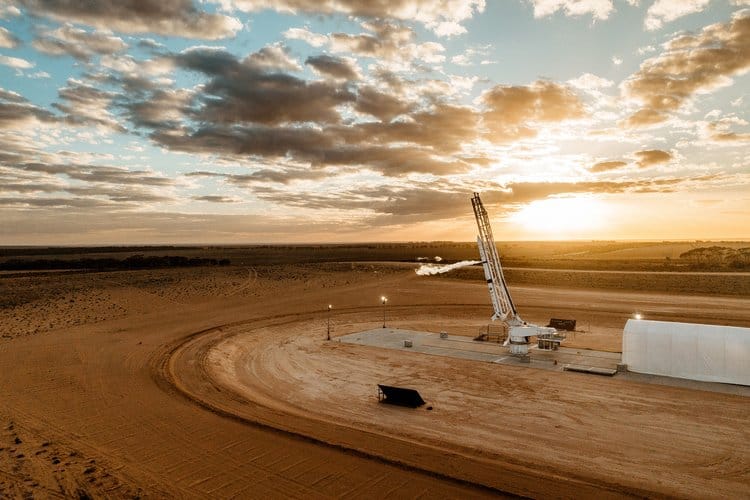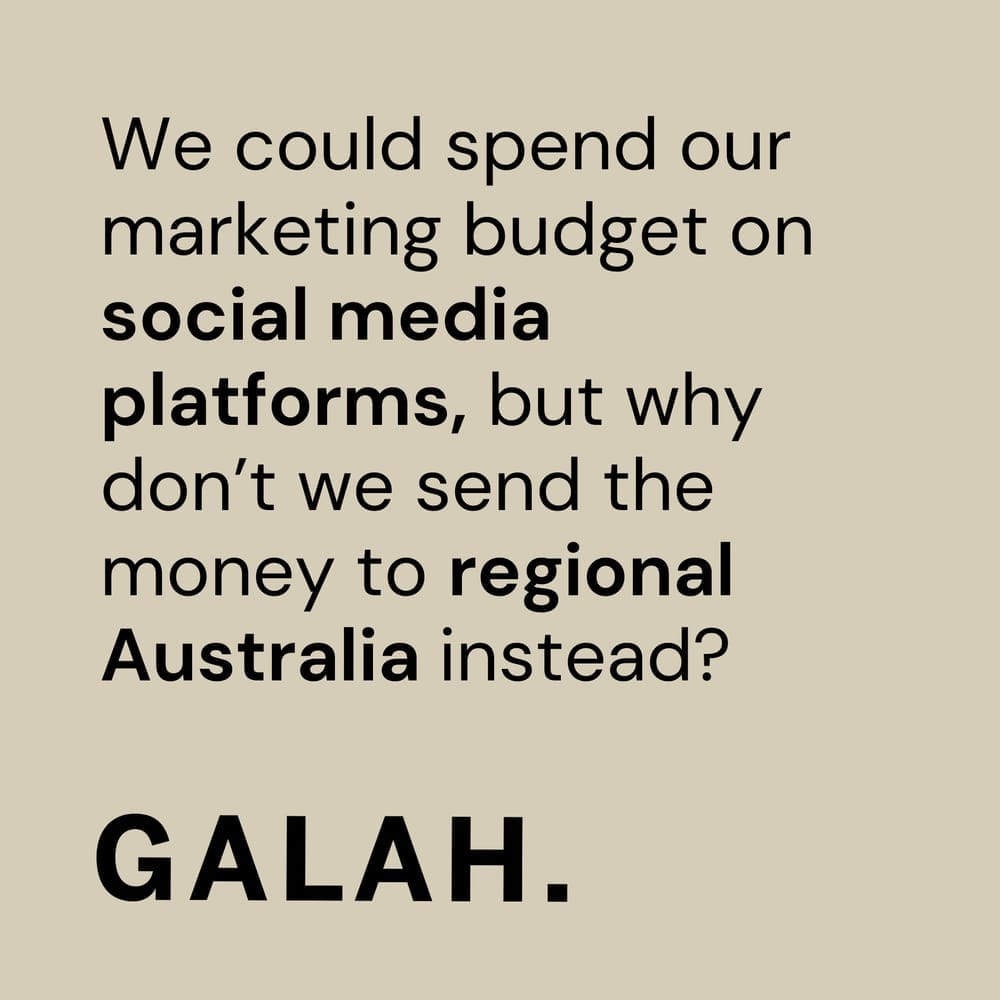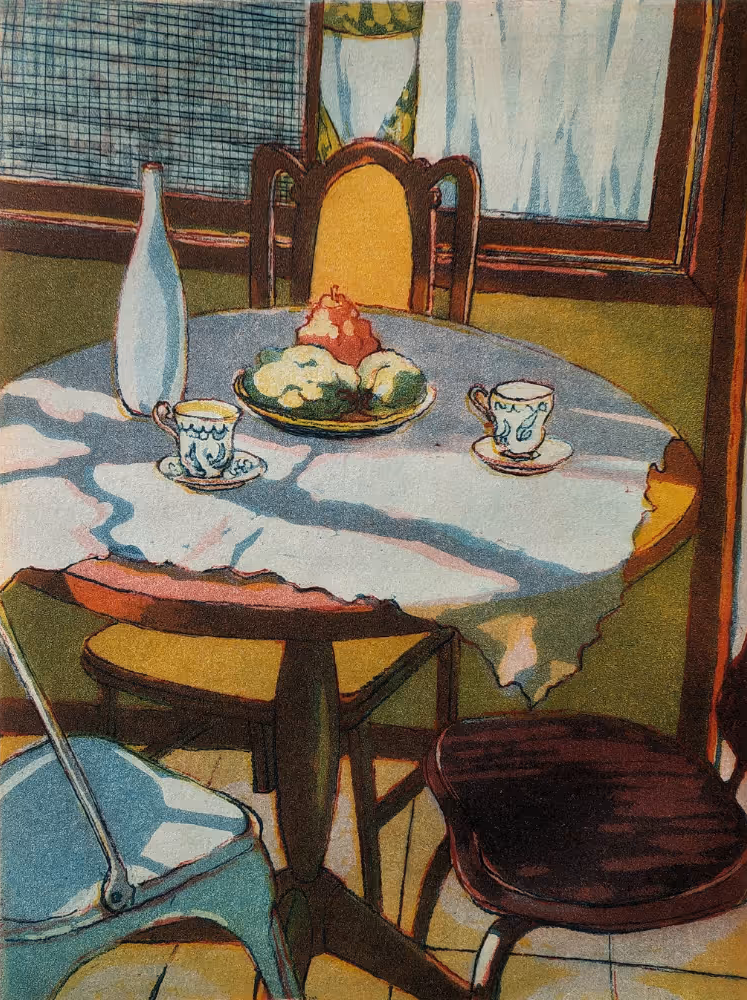
And reading budget reports so you don't have to. Welcome to Galah Weekly, our newsy newsletter keeping you up to date with regional headlines that matter, plus other delightful things from life beyond the city, by Anna Rogan.
The federal budget was delivered on Tuesday, and I spent the night reading government reports. A bottle of red and a family box of Maltesers were sacrificed for the cause. If you want to read all the details for yourself, go here. But if you’d prefer to skip the rhetoric and just get the highlights, this regional budget round-up is for you.
There are two major pieces to this year’s budget pie. The first is fairly straightforward: cost-of-living relief through a range of measures including tax cuts, energy bill support, student debt waivers, rent assistance, cheaper medicines and increased wages.
The second, which has been dubbed the Future Made in Australia package, is somewhat less straightforward. Treasurer Jim Chalmers described it as the biggest transformation since the Industrial Revolution, saying “Australian energy can power it, Australian resources can build it, Australia’s regions can drive it, Australian researchers can shape it and Australian workers can thrive in it”.
The Future Made in Australia package is aimed at boosting domestic manufacturing, fast-tracking the path to net-zero emissions and positioning Australia as a renewable energy superpower in the global economy. It's worth $22.7 billion and includes funding for new renewables projects, and tax incentives for investment in green hydrogen projects and critical minerals used to create batteries, solar panels and electric vehicles.
Housing
A landmark $4 billion joint investment with the Northern Territory Government, announced in March, will be delivered over 10 years to tackle overcrowding and provide homes for 10,000 people in remote communities in the NT. Read more.
An extra $1 billion goes to states and territories to build more homes, and $423 million goes to social housing and homelessness services.
Healthcare
Free digital mental health support services are being funded to the tune of $588 million, and the Royal Flying Doctor Service will receive $74 million. Meanwhile $56 million over four years has been committed to women’s health services to deliver better access for women in regional Australia and to provide free period products to First Nations women in remote communities.
Drought, extreme weather and natural disasters
$519.1 million goes to the Future Drought Fund to help farmers and rural communities manage the impacts of climate change and prepare for drought.
$174.6 million is earmarked for the National Water Grid Fund for new water infrastructure projects to enhance water security, boost agricultural production and help drought-proof regional communities.
$138.7 million goes to a range of natural disaster initiatives including the National Emergency Management Agency, aerial firefighting, mental health support and a pilot program for a private fleet that can respond during crises.
Infrastructure, internet and roads
Regional airports, remote airstrips and other connecting infrastructure will get upgrades to the tune of $101.9 million. The roll-out of community wifi in remote and regional Australia is set to receive $40 million, and $48 million has been set aside to improve First Nations digital inclusion.
Annual budgets are increasing for the Roads to Recovery and Black Spot programs. The new Safer Local Roads and Infrastructure program receives $200 million a year.
Jobs
The new Remote Jobs and Economic Development Program will receive $777.4 million which includes funding to create 3,000 jobs in remote Australia. An extra $1 million will go to developing a pilot program to attract more graduates to agriculture, and the AgCAREERSTART pilot program has been extended for another two years with $500,000 in funding.
Live sheep exports
Finally, a five-year support package worth $107 million will help Australia’s sheep industry transition away from live exports (more on this in a moment).
The dust has been blown off the Tourist Hotel in Narrabri, restored recently as the Art Deco jewel of NSW’s north-west. Now with a gastro pub menu, new wine list, and boutique accommodation, it’s a food lovers’ destination. Open daily, the hotel is the perfect place to relax, unwind, and celebrate special events. Upgraded rooms combine 1930s glamour with modern luxuries, creating an ideal place to stay while visiting the region. Surrounded by shops, dining and a cinema, the Tourist Hotel is the place to be in Narrabri. Discover more.
Australia’s live sheep export trade will be banned from 1 May 2028 with Federal Agriculture Minister Murray Watt saying the industry has shown “time and again that they are unable to meet the community’s expectations” on animal welfare (full story).
The government was committed to ending live sheep exports before the 2022 election, so the ban isn’t a complete surprise, but members of the National Farmers’ Federation were “shocked” by the short timeline (full story) and president David Jochinke described the announcement as “a kick in the guts” for Australian sheep producers (full story). Jochinke and leaders from other peak industry bodies staged a walk-out of Minister Watts’ post-budget speech on Wednesday morning in protest (full story).
$107 million in the federal budget has been allocated to support the transition and expand domestic sheep processing capacity (media release). However many farmers and industry experts, including those from other sectors, are concerned that the ban will have widespread negative impacts on regional communities and Australian agriculture (full story).
Last week we shared drought-breaking news from the Nullarbor. This week it’s Queensland’s turn with the state now totally drought-free for the first time in 11 years. After a strong wet season, the last two drought-stricken shires in the state, Diamantina and Bulloo shires, have had their status revoked. As communities celebrate full dams and green pastures, they’re also planning ahead to respond when the next drought rolls around. In the words of Diamantina Shire Mayor Francis Murray, "There's nothing surer than the dry season coming again" (full story).
Australia's biggest space rocket launched from Koonibba, SA, last Friday. The Koonibba Test Range is the largest commercial rocket-testing facility in the southern hemisphere, spanning 41,000 square kilometres. It specialises in suborbital launches and returns from space, and was developed by the Koonibba Community Aboriginal Corporation in partnership with Southern Launch in a first-of-its-kind collaboration (full story).

“As farmers, the welfare of our animals is paramount. The challenge is getting places you can actually process your animals onshore. The price of processing onshore is unbelievably expensive,” sheep farmer Rachel told ABC Radio Perth.
Why do Australian farmers send live animals overseas? As Rachel suggests, both sheep and cattle producers, especially those in WA, face high domestic processing costs coupled with a shortage of local abattoirs and skilled abattoir workers.
Meanwhile, international demand for Australian livestock is strong, particularly in South East Asia and the Middle East. This demand is largely driven by the high quality of Australia’s livestock combined with cultural preferences for freshly slaughtered meat. And while all Australian lamb and beef is halal certified, international markets often lack the cold storage required to import fresh meat. Read more.
In Galah budget news, this month we’re diverting our marketing money from Instagram and Facebook to something that directly benefits regional Australia instead.
For every new subscriber to Galah print magazine for the month of May, we’re donating $5 to the national sexual, domestic and family violence response and recovery service, Full Stop Australia.
So far this month we’ve raised more than $2,000 for Full Stop Australia, thanks to new subscribers and also to artist Leesa Cowan, who made a limited-edition run of Galah bookmarks for us. Instead of sending us an invoice, she said "donate the money to Full Stop Australia". Thank you Leesa.
If you’d like to help us send more money to Full Stop, subscribe to the print magazine here.


A collaborative exhibition of works by artists Julia Griffin and Stephen King reflects moments of light and memories from the land. The artists work and live together on their property outside Walcha in rural NSW, and a collection of their paintings, etchings and sculptures are assembled in From the Land. At the Rosby Cellar Door and Gallery, Eurunderee, NSW, until 24 June. Read more.
Hundreds of pumpkin rollers will send pumpkins hurtling down Policeman’s Hill in the Qld town of Goomeri during the Great Australian Pumpkin Roll. While the pumpkin roll is the main attraction, this annual gourdy celebration also offers festival-goers a vibrant street parade, live music, food, wine and street markets. On 24-26 May. Read more.
It’s business in the front and party in the back as the Imperial Hotel in Murwillumbah, NSW, gets set to host a good old-fashioned yard party. Festivities kick off in the Impy car park out the back with live music from local Northern Rivers bands, craft beers on tap and a pop-up barber shop where you can get your mullet clipped. Join the party and help raise funds for the Black Dog Institute’s Mullets for Mental Health campaign. On 27 May. Read more.

Interview by Emma Hearnes
Ngen’gi wumirri artist Kieren Karritpul works and lives in Nauiyu on the Daly River, NT. Hailing from a long line of acclaimed creatives, Karritpul won the prestigious Ramsay Art Prize in 2021, and his works feature in public and private collections including the National Gallery of Australia and Parliament House in Canberra. When he's not creating, Karritpul works at the Merrepen Arts Centre, a hub of Aboriginal artistic excellence in Nauiyu.
In my community, our land is a part of everything we do and feel – it nurtures us and protects us. Each day we hunt for food: collecting, gathering, and fishing. It’s a daily ritual that I have followed all my life. When I was young, I went with my elders, learning our ways, and now I take others out and teach them. When I’m out in the bush, I feel free and connected to the earth and my ancestors.
I really admire my mother, Patricia Marrfurra McTaggart OAM, who is an artist and linguist. She paints weaves and works on linguistic projects. Her work has been featured in many publications and exhibitions, including Sculpture by the Sea in Sydney.
In January, I was invited to participate in Colomboscope, a contemporary art festival and creative platform in Sri Lanka. Thanks to sponsorship from Melbourne University and the Australian High Commission in Sri Lanka, I participated as an artist, ran two workshops and gave a few public talks. It was amazing visiting an Asian country for the first time and meeting artists from all over the world.
I also recently got a Flourish Grant from Creative Australia to visit Maningrida, an Aboriginal community in the heart of the Arnhem Land region, and share my knowledge and skills with other artists—another amazing experience. I feel so lucky that my profession allows me the freedom to travel and learn from these visits.
Newcastle woman Lisa Kournelis befriended a red-bellied black snake that was living in her car, naming it Fluffy. She donned thick pants and continued to drive with Fluffy loose in her vehicle after four snake catchers failed to remove the reptile (full story).
Also in Newcastle, a pilot flying a light aircraft made a text-book emergency “wheels-up” landing after the plane's landing gear failed. All passengers aboard the aircraft, and the pilot himself, walked away from the incident unscathed. The footage of the landing is absolutely worth viewing (full story).
We’d love to hear about the news, events and people that should be making the headlines in the Galah Weekly newsy. Share what’s new(s) in your neck of the woods with us at newsie@galahpress.com.